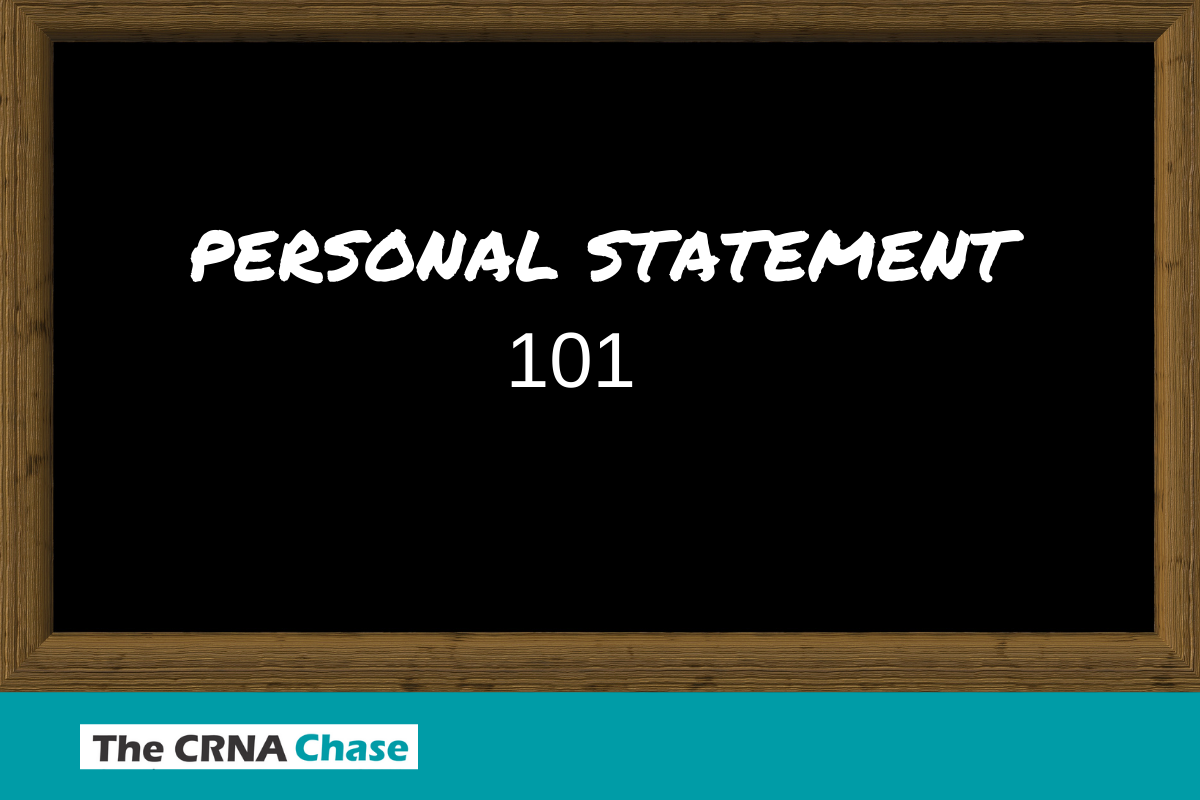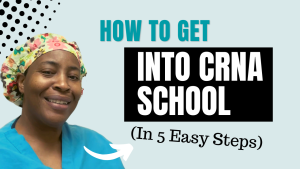Personal statements may seem customary, but they can be the deciding factor in the decision-making process. Yes, the decision on whether you get an invitation to interview for a CRNA school.
Your personal statement is another way to stand out from the rest of the CRNA school applicants. It’s also a great way to show off your accomplishments, how much you like the school, and why you want to be a CRNA.
But oftentimes we get hung up on the introductions and conclusions. And not knowing exactly how to start your personal essay so it shows you in the best light and all within the maximum number of words or characters is even more frustrating.
This results in you procrastinating and stressing out on what to write. Then you either don’t get the personal statement written in time or do a terrible job writing it. I experienced the same stressors while writing my personal statement for CRNA school. So I completely understand.
Read: Managing Stress During Your CRNA Journey And Beyond
Keep reading for the ways to ensure you have a killer opening personal statement.
1. Brainstorm ideas based on your updated CV available
While you don’t want to repeat things on your CV onto your personal statement, it is wise to look over your CV to jog your memory. You may remember an event or story that would be great to include in your personal statement.
2. Get to the point fairly quickly
In order to get the attention of the admissions committee, you want to make a great impression right off the bat. It’s alright to warm your reader up for what you have in store. But ideally you want to get to the point pretty soon after your opening statement.
3. Don’t waste time on a catchy opening
When writing your personal statement you want to leave plenty of time for proofreading and editing before submitting your final draft. So don’t spend valuable time trying to come up with the perfect opening line. Whenever you try too hard it may come off as fake or not make any sense.
4. Write what comes naturally
Your personal statement will come across as more genuine and unique by just being your authentic self. Because you have to remember your personal statement is for the admissions committee to get to know you better. It’s your story to tell.
5. Use an anecdote
A great way to grab any reader’s attention is by telling a mini true story or anecdote. It’s a great way to keep the reader engaged and keep them wondering what’s next. This is the technique I suggest to those I have consulted with in regards to writing their personal statement.
- This is how you would begin your introduction with a mini-story about a shadowing experience. Start with the 5w’s- Who, What, When, Where, and Why. For example, the 5w’s are- Me, or the patient. At the hospital. While shadowing. One morning. Witnessed a cardiac event during surgery.
- Next, include any sensory details that go along with the story. What did you see, hear, smell, feel, etc? For example, I heard someone yell for the crash cart.
- Then you want to put it all together and start with the “where”. You want to start as close to the peak of action as possible
6. Leave the introduction for last
I normally like to write my introduction first, but sometimes whenever I am struggling to get started I leave it for last or later in the writing process. The bottom line is don’t let indecisiveness stop you from writing your personal statement.
7. Avoid the most obvious cliché sentences
You want to avoid sounding like everyone else. Remember it’s all about how you present yourself and standing out from others. Here are the some of the most overused openings according to UCAS:
- From a young age…
- For as long as I can remember…
- I am applying for this course because…
8. Ditch someone else’s quotes
Avoid using someone else’s words after all it’s your personal statement. And it’s even worse when you use quotes without tying them into your essay. After all, it’s not about what their thoughts are, it’s all about you.
9. Follow the given instructions or prompts
I know this may seem obvious, but it’s surprising how many people will dive right into writing without fully reading the directions. As a matter of fact, I would have a copy of the instructions nearby as I am writing my personal statement. One reason you don’t want to jump right into writing is that each Nurse Anesthesia program will likely have different ideas of what they want you to include in your statement.
For example, one program may include a word limit versus another program may not specify this at all. Therefore, it’s crucial to review the instructions fully before you begin the writing process. Unfortunately, this is a surefire way to have your application thrown into the rejection pile for not following directions which is a huge part of CRNA school.
Essential Thoughts
The bottom line is to be yourself and write honestly about your personal and nursing experiences. At the end of the day, the admissions committee just wants to get to know you. So use these tips to show them why you would be a great asset to their CRNA program.
About The Author
Although hundreds of critical care nurses visit Kiki’s blog each month to learn more about the CRNA profession, her path to becoming a CRNA was not easy. Go here to read her incredible story, “My CRNA Journey: Surgical Tech To CRNA- The Unbelievable“. For a complete guide that shows you exactly how to become a CRNA, grab a copy of the “Ultimate Guide to CRNA School Admission”. It’s FREE and will save you a ton of time and headaches since all the info you need is in one place.







